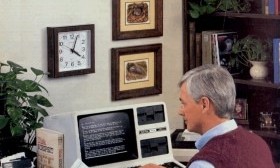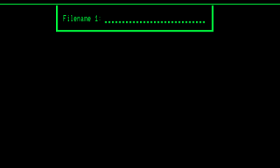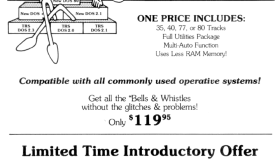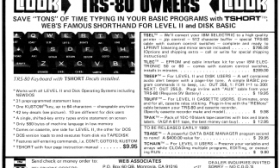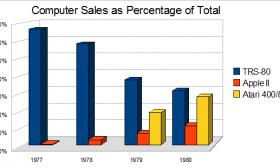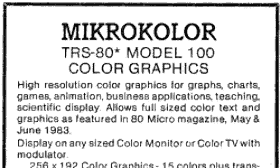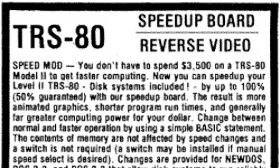Was the Model III created to replace the Model I?
The TRS-80 Model III, introduced in August 1980, is often described as a replacement for the TRS-80 Model I, introduced in August 1977. Considering that the Model I was discontinued just six months later due to its failure to meet new FCC regulations, it is easy to assume that the Model III was always intended to replace the Model I.
But Radio Shack showed no sign of any plans to discontinue the Model I after the introduction of the Model III. It remained in the catalog at a price $200 lower than the Model III. Jon Shirley, Vice President of the Computer Division at Radio Shack, wrote in his “View from the Seventh Floor” column in the September 1980 issue of the TRS-80 Microcomputer News:
TRS-80 Microcomputer News
The TRS-80 Microcomputer News was Radio Shack’s own official publication supporting the TRS-80, sent for free to anyone who bought a TRS-80 computer. The motto described it as “The microcomputer newsletter published for TRS-80 owners”.
Originally called the Radio Shack Microcomputer Newsletter, the first issue, published in 1977, was four pages long. It was published irregularly after that (two issues in 1978 and seven in 1979) until it changed to a monthly publication schedule with the October 1979 issue. It remained monthly from then on, with the exception of three combined issues in 1980 and 1982. The name changed to the TRS-80 Microcomputer News with the March/April 1980 issue.
How to transfer files using FastTerm
One of the most common questions I receive is about how to transfer files from a Model 4 to another computer. Here is one of the simplest techniques I have found for a null-modem cable transfer.
You will need to use a null-modem cable to connect your Model 4 to another computer and run a communications program on both computers. Both communications programs need to be capable of performing YMODEM transfers. If your other computer is running Windows, then HyperTerminal (which was bundled with Windows XP and earlier) is a good choice.
In my opinion, the best communications program for the Model 4 was FastTerm, by Mel Patrick. For file transfers, the version that you need is FastTerm II version 4.62. That was the final version and the only one released as a full registered version that supported YMODEM batch transfers.
ULTRADOS
ULTRADOS was the first TRS-80 operating system written by Vernon Hester. Introduced in September 1980, ULTRADOS was sold by Level IV Products, a software and hardware retailer based in Michigan. The regular price for ULTRADOS was $119.95 but the introductory price of $89.95 lasted for several months. ULTRADOS was for the Model I only; there never was a Model III version.
Originally called Level IV DOS, ULTRADOS began life as a heavily patched version of Model I TRSDOS. However, Vernon Hester made so many modifications that ULTRADOS bore little resemblance to TRSDOS. ULTRADOS was a very stable operating system with the bugs of TRSDOS corrected.
Games by Wayne Westmoreland and Terry Gilman
Wayne Westmoreland and Terry Gilman wrote some excellent games for the TRS-80 from 1981 to 1983, including Sea Dragon and Armored Patrol. In 1995, Wayne Westmoreland released all of those games into the public domain.
Here is a description, written by Wayne Westmoreland in 1995, for each of the games.
TSHORT
After upgrading their TRS-80 Model I to Level II BASIC, many people missed the “shorthand dialect” of Level I BASIC. TSHORT was a very popular keyboard macro utility for Level II BASIC that added a similar kind of shorthand for BASIC commands. It was written by Ron Wirth and released in 1979 by Web Associates for $9.95. (The name Web Associates was not a reference to the World Wide Web, which it predated by ten years.) TSHORT ran in high memory above BASIC and consumed only 580 bytes of memory.Was the TRS-80 once the top-selling computer?
It is often stated that the Apple II dominated the computer market from its introduction in 1977 and that the TRS-80 and other competitors remained only minor players. Although often repeated, the numbers don’t bear out this assertion. Apple sold around six million Apple II’s between 1977 and 1993, but sales started slowly and built up over time.The Mikrokolor Color Graphics Interface
The Mikrokolor was a color graphics interface for the TRS-80 Model 100 that was sold by Andreasen’s Electronics Research & Development, Inc. The Mikrokolor hardware was designed by Paul Andreasen, the digital interface and graphics routines created by James Cole, and the software written by Andrew Baird. Andreasen’s Electronics Research & Development also sold versions of the Mikrokolor for the Model I, Model III, Model 4, and Model 12 and also the S-100 bus and the Apple II. There was also a $54.00 VHF modulator for the Mikrokolor that operated on channels 7 to 10.
The Mikrokolor fit into much the same category as the later Disk/Video Interface sold by Radio Shack, allowing a Model 100 to be used with a separate monitor. Unlike the Disk/Video Interface, which was black and white only, the Mikrokolor displayed in color.
The Archbold Speedup Board
The TRS-80 Model I ran at a speed of 1.77 MHz. That speed was quite fast for a microcomputer at the time, but almost immediately people began designing speedup boards to increase it. The most famous of those speedup boards was the Archbold Speedup Board, designed by Bill Archbold and sold by Archbold Electronics.
The Archbold Speedup Board itself was a fairly small board (1.5" by 2.5"). It came with an instruction manual containing complete installation directions, including a photo of the Model I logic board. The exact installation procedure varied depending on the hardware installed but involved soldering wires to various points within the Model I and cutting a few traces.
